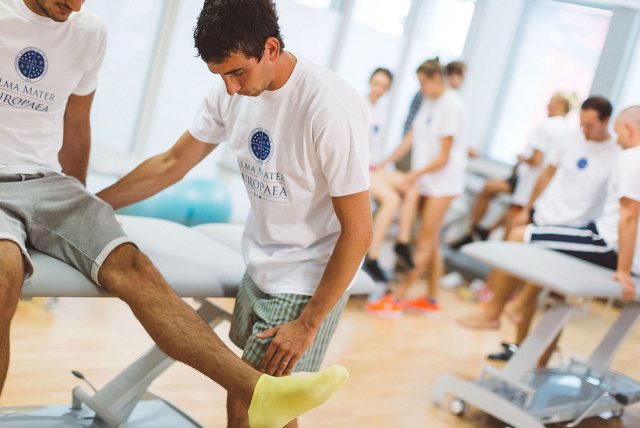Physiotherapy also known as Physical therapy, is integral in one’s recovery. It automatically becomes an ally in one’s pursuit to regain his or her physical strength and capabilities, zest in life, and self-esteem. Over the years, physiotherapy has given back the quality of life many individuals deserve. This came from a point of desperation, depression, and hopelessness.
It is amazing that from hopeless to helpless, patients recover, which gives them the bravado and motivation to forge ahead with life, despite the trauma they encountered. Physiotherapy is not only for the elderly. It can be administered to anyone who partially or completely lost their balance and other motor capabilities brought about by trauma and other physical injuries. It can also be through debilitating disease/s.
Physiotherapy supplies in Markham offer a wide range of equipment and tools to support patients’ rehabilitation and therapeutic needs.
Case in point, physiotherapy is responsible for making people live a normal life. With the help of various exercises, methods, and techniques, a physiotherapy patient may well be on his or her way to recovery with the help of an NDIS registered physiotherapist.
Common conditions treated by Physiotherapy
Physical therapy or neuro physiotherapy can treat a wide array of medical conditions. Here are some of the conditions that can benefit significantly with the intervention of a carefully-planned and a well thought out therapy session:
– Cardiopulmonary conditions like COPD (chronic obstructive pulmonary disease), cystic fibrosis, and post-myocardial infarction
– Sports-related injuries such as tennis elbow, sprains of varying severity, concussions, etc.
– Women’s pelvic floor malfunction which results in urinary incontinence, lymphedema, and others
– Therapy sessions for trigger finger or carpal tunnel syndrome
– Musculoskeletal dysfunction like back pains depending on severity and cause, rotator cuff tears, and others
– Neurological conditions and dysfunctions such as stroke, spinal cord injuries from playing sports and accidents, MS or Multiple Sclerosis, vestibular dysfunction, traumatic brain injuries brought about by trauma or accidents, and most of all, stroke
– Even pediatric conditions such as a child’s developmental delay, cerebral palsy, muscular dystrophy, and other related conditions.
With the help of a licensed physiotherapist, their recommended exercises and treatment may provide a long and lasting relief and/or improvement. It is best to immediately visit a therapist so a physiotherapy session can begin before things get worse. Remember, they are well-trained and highly skilled in providing the best solution to the above-mentioned conditions.
To discuss further, here are some of the benefits of physiotherapy or physical therapy:
Significantly reduces and even (totally) eliminating pain
There are a good number of therapeutic exercises and techniques responsible for significant pain reduction. Even better, with continued sessions and treatments, the experienced menacing or even debilitating pain may be completely eliminated. Here are some ways that physical therapy can help achieve pain reduction and elimination:
– Ultrasound
– Taping or electrical stimulation
– Exercises which target mobility particularly in the injured or damaged part
– Joint and soft tissue mobilization
Averts the need for going under the knife
Thankfully, continued physiotherapy sessions greatly help pain reduction. As earlier mentioned, the pain may even be completely managed over time. Because of this, physicians may deem it unnecessary to go through surgery for further treatment. If surgery is still needed, the exercises and techniques performed during sessions help one physically prepare for it. Because physical therapy exercises lead to better shape, recovery from the surgery may come faster than expected.
Effective stroke recovery
Let it be known that stroke is a silent killer. It happens when you least expect it. Unfortunately, many stroke patients experience mobility impairment. What used to be normal and routine tasks become extra challenging to perform. Worse, mobility may severely be damaged, paralyzing a good portion of the body.
This is where physiotherapy comes in. Physiotherapy strengthens the weakened and affected part of the body for improvement of balance and gait. Physiotherapists may also target practical tasks and activities such as transferring or moving around the bed for independence at home. Such exercises also assist stroke patients in going to the toilet, bathing, dressing, and other activities that require movement.
Improve balance to avoid falling
Physiotherapists conduct exercises that target overall balance improvement. Such exercises help patients for safer walking. As they go through the sessions, they develop an improved sense of coordination. After giving it quite some time, they can walk freely, without the need for assistance. They should also notice a significant decrease in tripping, wobbling, or falling thus regaining their self-confidence altogether.
Manage heart and lung conditions
For this process to be successfully lodged, the physiotherapist needs to analyze the patient’s condition. After which, the therapist formulates exercises that specifically target the problem. For example, patients who suffered a heart attack or have undergone some procedure may receive an in-depth cardiac rehabilitation.
The physiotherapist may also refer a patient to a nutritionist to further manage diet and other nutrition-related remedies such as controlled intake of burgers and other comfort foods. As for pulmonary issues, physiotherapy improves the quality of life by exercises that promote conditioning and breathing exercises. Some exercises also help in getting read of fluid blockages which eventually results in clearer lungs.
Manages some frustrating age-related issues
As people get older, their bodies become weaker. Also, it becomes susceptible to diseases such as osteoporosis or arthritis. Some may even need a joint replacement. Given this, physiotherapists are experts in providing exercises that manage joint replacement and others that strengthen the affected body part/s brought about by osteoporosis and arthritis. The exercises involve performing at the clinic as well as others they can continue doing at home.
Helps in sport-related injuries
Sports are always fun to do. In fact, physicians strongly encourage everyone to get into a sport they like. This helps in leading a healthy and active life. However, injuries may not be avoided while playing sports. In the event of a sports-related injury, physiotherapists can create a recovery plan. This may involve stretching exercises, walking, bending, and other activities that promote better mobility and balance.
Not only are these exercises for motor improvement, but they also prevent developing the same injury again. With consistent therapy sessions, people are expected to return to their sports in a few weeks or months (depending on the severity of the injury).

A professional writer with over a decade of incessant writing skills. Her topics of interest and expertise range from health, nutrition and psychology.




